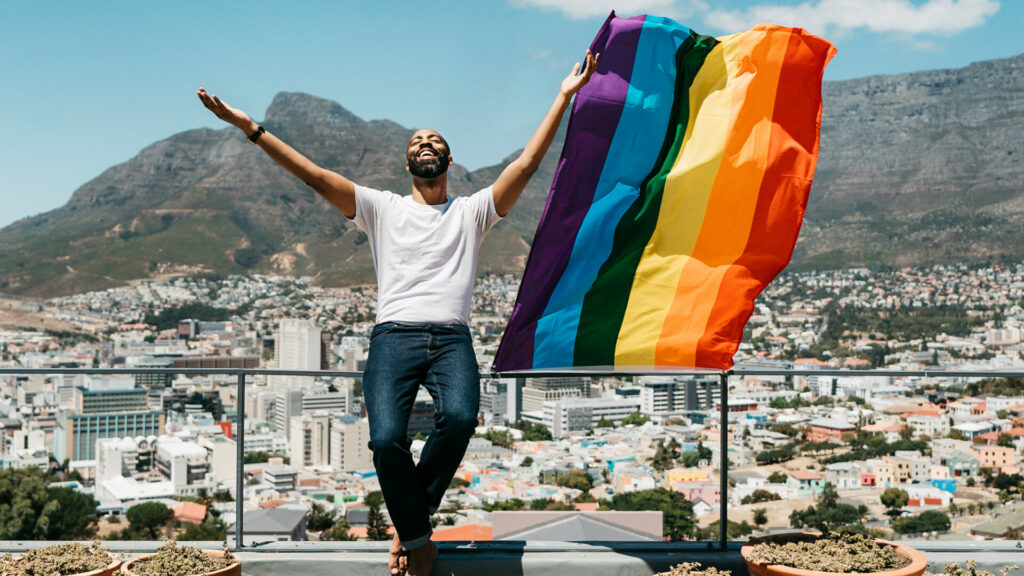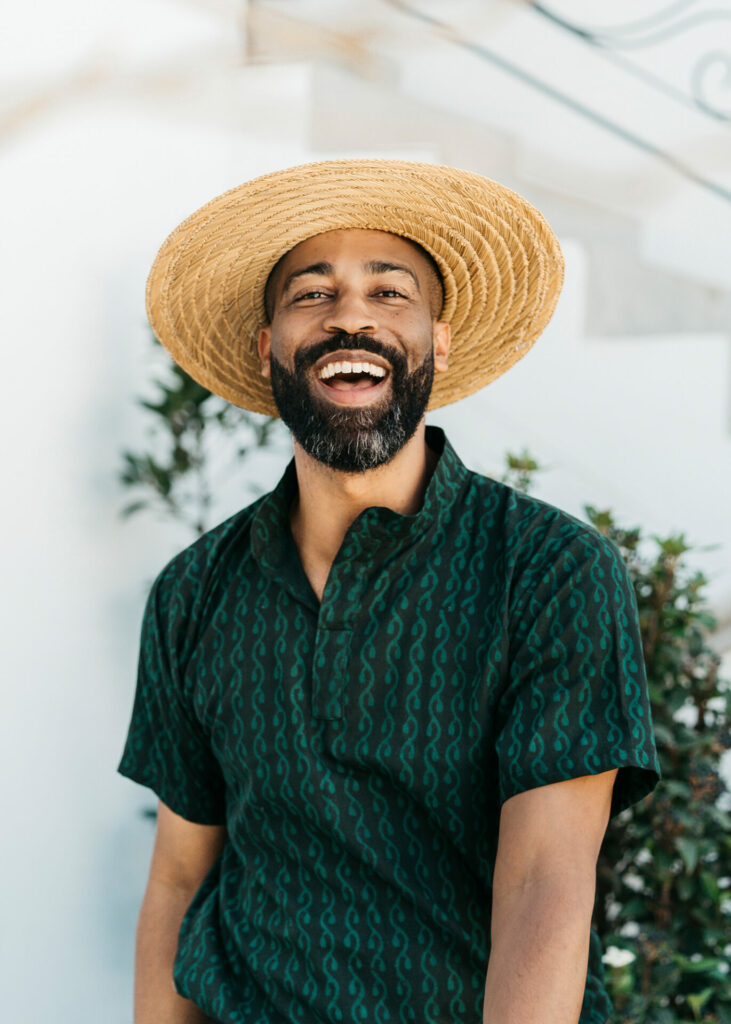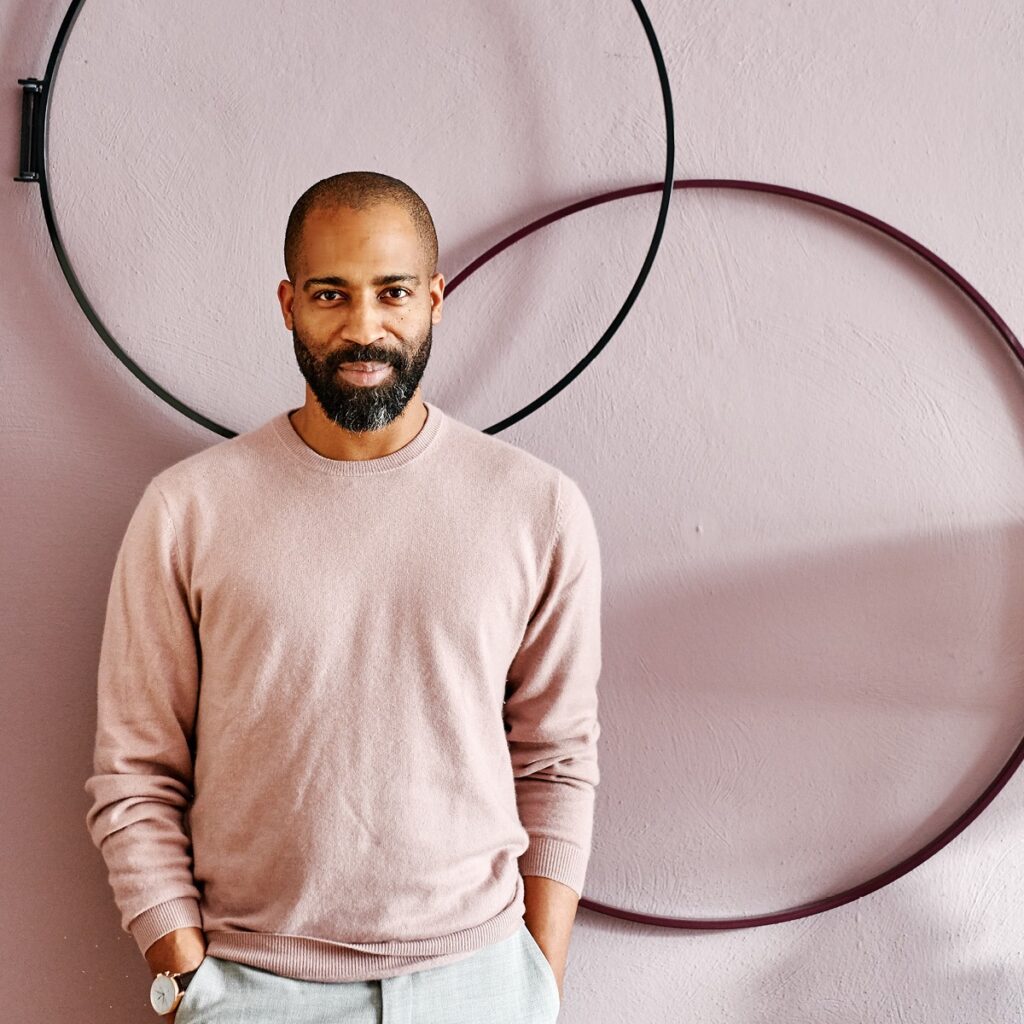Soho House exec Chris Glass on finding shared identities outside of sexuality
In partnership with myGwork
By Zoë Schulz

Chris Glass, global director for diversity, equity and inclusion at Soho House, speaks to Zoë Schulz from myGwork about creativity, connection and community.
“I try to avoid defining myself by the job that I do but rather by my talents. I’m a problem solver,” Chris opens with. “I use creativity and service as the lens through which I try to solve problems. My purpose is very deeply rooted in helping people to live better lives by elevating the ordinary. This includes my role as the Global Director for Diversity, Equity and Inclusion at Soho House.”
Chris has been with the member’s club since 2009 and is one of a handful that has been with the company that long – seeing it grow, expand, and flourish. Starting as the membership manager for the Berlin House, it was the first time they had opened in a non-English speaking country, Chris recalls, so there was a mix of risk and innovation all at once.
Growing up in Atlanta, Chris has now been in Europe as long as he lived in America, feeling equally tethered to both parts of the world. As the European Membership Director, he built Soho House creative communities in various cities around Europe until he realized he wanted to take time to investigate who he was outside of work.
Chris switched to working part-time and it was during this break that he dove into his own creativity, cultivating a love for interior design, modelling, and event programming. This included advising as the interior expert on a German makeover TV show for two seasons. As a kid, Chris explains he was fuelled by creative energy, remembering back that even book day was an excuse to find a long t-shirt and twirl around with a ribbon in the air. It was his English teacher who took note of this, telling his parents: “He’s very creative and loves to express himself. I would encourage you to find an outlet for it.”
“It was always evident to me that something was different about me”
So they did, Chris was enrolled in acting classes, which later led him to attending a performing arts school. “It was always evident to me that something was different about me. I didn’t have a name for it, and I didn’t understand why I felt different. I think what I was demonstrating was probably the beginning of my queerness, but I also had this creative expression that I just wanted to share with people.” Chris spent his younger years constantly performing – singing, dancing, and acting. It was always presumed he would be a performer. Honing his craft, he was accepted into the Boston Conservatory of Music, studying musical theatre. While there, however, he felt as though something wasn’t right and the realization that he was deeply unhappy set in. Knowing this wasn’t right for him, Chris left, and life led him on a different path – but the ability to listen to what he really needed, outside of the often arbitrary goals we are told to chase, would stay with him.
It was within the filming of the makeover TV series that Chris once again heard this voice. Watching himself on the show, unapologetically himself, was a cathartic experience.
“I was able to accept and embrace more of the truth of who I am”
“Seeing myself on screen, I couldn’t not see the wholeness of myself. The show was focused on four queer people helping others to redefine their lives. It allowed me to see not only my queerness more fully but to see all of myself more fully. I was able to accept and embrace more of the truth of who I am, and that’s something that I continue to unpack every day. I’d found that essence of self that I’d been in search of.”

Chris stepped back into a full-time role at Soho House, even better equipped. Now leading the team on their diversity and inclusion journey, he is adamant in how they can lessen the inequalities of marginalized people within their business. As a space for the creative community to connect, their member base has always naturally been an anchorage for the LGBTQ+ community – particularly with their very first House in Soho, the LGBTQ+ epicentre of London – but adding a layer of intentionality to their queer inclusion cements this into their foundation.
This sentiment is felt in the way Soho House want to show up for each and every person.
Following the death of George Floyd in 2020 and the events that followed, a new incarnation of Soho House’s diversity and inclusion journey was born, Chris explains, knowing they have a responsibility to push for a world that stands by people of colour. These are also not separate journeys, but each intertwines as do our identities and communities.
“We’re living in a time when intersectionality is not only important but vital to lean into”
“We’re living in a time when intersectionality is not only important but vital to lean into. As much as I appreciate people recognizing me as a gay man and creating space for that, I’m not just a gay man. I’m a person of colour. I’m an immigrant.
There are different aspects of identity that come together to make me this unique individual, and I think it’s necessary for brands and employers to try and begin to unpack those individual pieces that make up the whole picture. None of our identities are limited to a single entity, and even within that – such as me being a gay man, I don’t represent all of what it means to be a gay man, because we are not a monolith.”
These parts of Chris’s identity are a fundamental part of who he is, and he doesn’t leave them at the door when he shows up to work – nor does he expect his team to either. As someone who has been othered throughout his life, Chris adds, it is even more important to him that he leads with empathy and to make sure his team can show up in their wholeness.
“We want the folks that are the best at their jobs, but also people that live and breathe hospitality and that lean into this space of being able to show up as all of who they are at work. I choose consciously not to separate my lived experience from the way that I lead. I’m very intentional about showing up as a leader with empathy, which is a choice that I make. Sometimes it’s more of a challenge, but I try to always be intentional about making that choice.”
“Community is a part of human nature”
Interior design continues to be a creative outlet for Chris. He explains it as an exercise of creativity but also as a way to communicate; weaving storytelling and aesthetics into one. Again, it comes back to problem solving and figuring out how to take the essence of who someone is and manifest that into a physical space. Most of all, though, Chris explains, it’s a way to connect with people. “Community is a part of human nature,” Chris ponders. “It’s in our nature to yearn for connection and I think connection is the route of community.” He goes on to note that if we look back at the earliest civilizations, people were clustered together, moving around together based on a need but also in theory because of a sense of shared interest and ideals. This drive for connection is an innate part of our humanity, and although it’s changed exponentially since then, perhaps in some ways, it’s not so different.

This drive to build authentic connection is present in all avenues that Chris winds down, whether it’s his creative ventures or in the physical space at Soho House. Although the way we foster community has changed from early civilization, perhaps the way in which we need this for survival has not, particularly with the current political climate. Whether we are connecting to one another, or connecting to the truest version of ourselves, it is a light that sparks hope when we need it the most.
“I think we’re in a particularly dark moment when it comes to the reversals of civil rights for women, queer people, and trans people. There’s a phrase that says that hope dies last, so I’m hopeful that we will continue to react and challenge what we are seeing happen, and perhaps this will be a way for us to reconnect as a community.
“I want to see us coming together again, supporting each other, lifting each other up and also bridging the gap between young and old. Hopefully bridging the gap between queer people and people who aren’t queer too – I want to know how we can all come together and find a shared identity that goes beyond our sexuality or geography and find ways to connect in a world that is intent in many ways on our disconnection.”
Soho House is a proud partner of myGwork, the LGBTQ+ business community.
